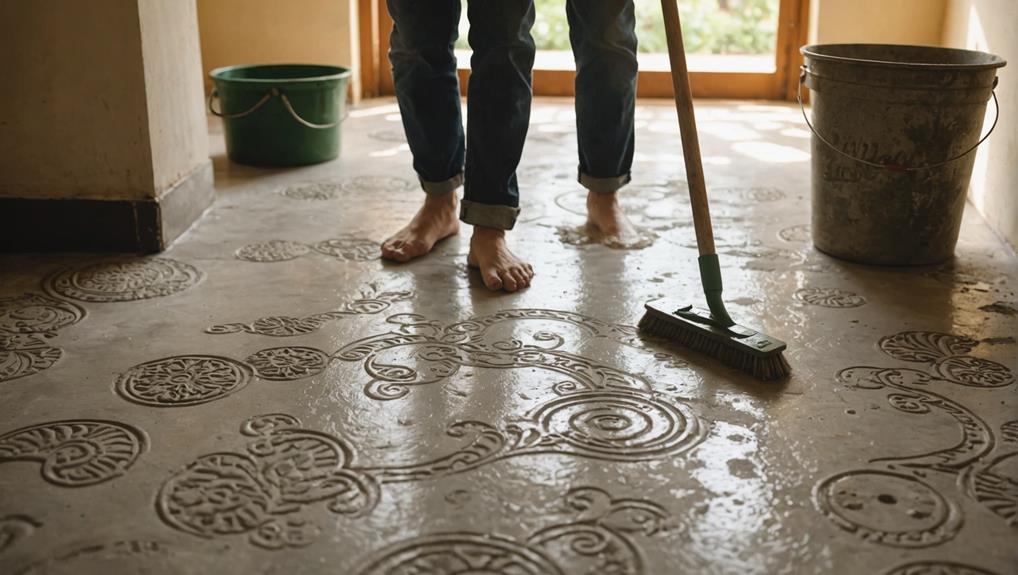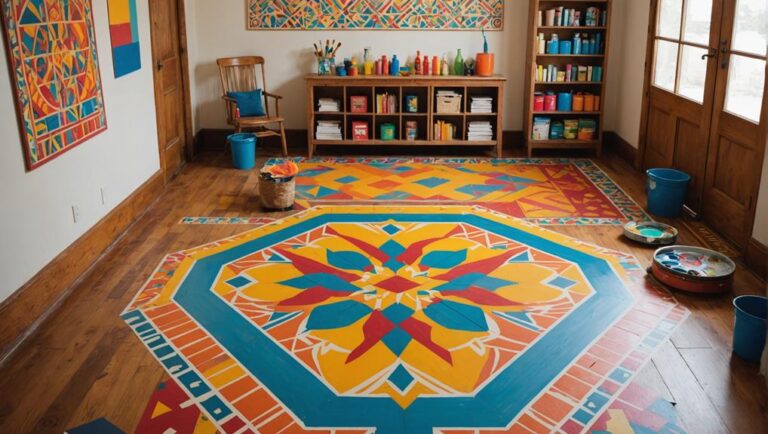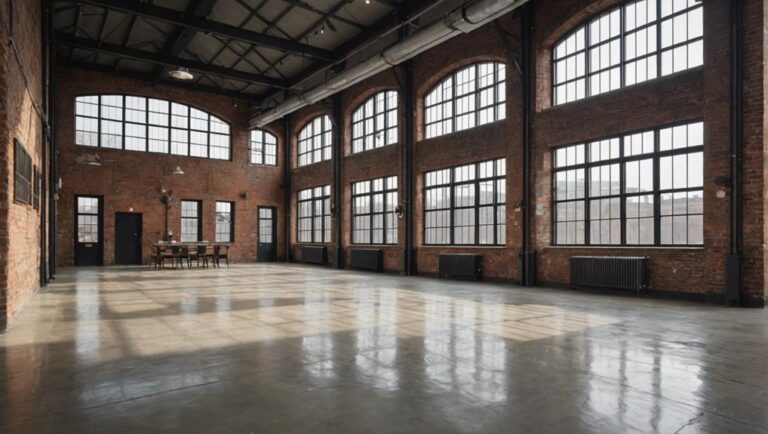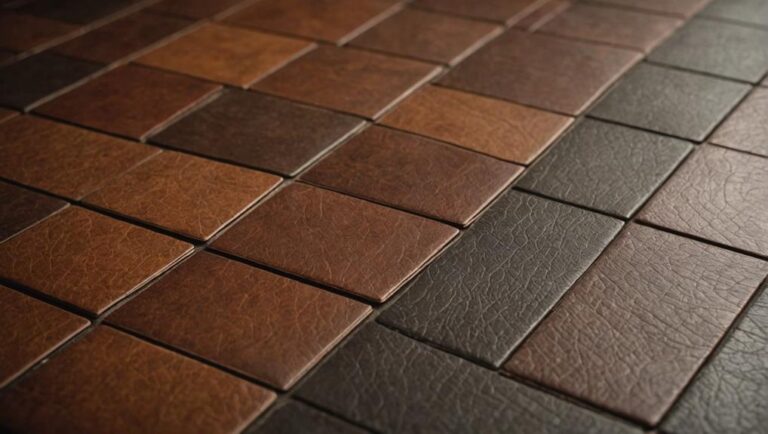To clean and preserve old cement floors, start by evaluating their condition for cracks and moisture. Sweep and mop using pH-neutral solutions, then consider deep cleaning methods, such as vinegar solutions or pressure washing, depending on the dirt type. For stains, identify the type and apply the appropriate cleaner. Sealing the floor enhances appearance and protects against damage; choose the right sealant based on your floor's specific needs. Schedule regular inspections and maintenance every few months. This systematic approach guarantees longevity. You'll find that a deeper understanding of these techniques can further enhance your floor care strategy.
Assessing Floor Condition
How can you effectively determine the condition of your old cement floor? First, you'll want to conduct a thorough surface evaluation. Begin by inspecting the floor visually for cracks, discoloration, or any signs of wear. Pay close attention to high-traffic areas, as they often exhibit more significant damage. Use a flashlight to illuminate any hidden imperfections that may not be immediately visible.
Next, perform a damage evaluation. Gently tap the surface with a hammer or a similar tool to identify hollow spots or delaminations. If you hear a dull sound, it may indicate underlying issues. Additionally, check for moisture intrusion by applying a plastic sheet to the floor and sealing its edges; if condensation forms beneath the sheet after 24 hours, moisture is likely present.
Document your findings meticulously. Make note of the type, location, and severity of any damage you discover. This record will serve as a reference point for repairs and cleaning methods later on. If you find extensive damage, consider consulting a professional for further evaluation and repairs.
Safety should always be your priority. When evaluating your floor, wear appropriate protective gear, such as safety goggles and gloves, to prevent injury. By systematically evaluating the surface and assessing damage, you can create a clear picture of your old cement floor's condition, which is essential for planning effective cleaning and restoration strategies.
Basic Cleaning Techniques
Cleaning old cement floors requires a systematic approach to guarantee the best results. Start by evaluating the surface texture of the floor. Different textures may require varying cleaning techniques. For smoother surfaces, a simple mop and bucket may suffice, while textured surfaces might need a scrubbing brush or a pressure washer for effective dirt removal.
Before you begin, gather your cleaning supplies, including a broom, mop, bucket, and appropriate cleaning solutions. For regular maintenance, you should aim to clean your cement floors at least once a week. This helps prevent dirt and grime buildup, which can contribute to wear and tear over time.
Begin by sweeping the floor thoroughly to remove loose debris. Make sure to get into corners and crevices where dirt can accumulate. After sweeping, dampen your mop in a solution tailored for cement floors, being cautious not to oversaturate the mop, as excess water can damage the surface.
Mop in sections, rinsing the mop frequently to avoid redistributing dirt. Pay particular attention to high-traffic areas, which may require more frequent cleaning. After mopping, allow the floor to air dry completely; this is essential for maintaining the integrity of the cement.
Deep Cleaning Methods
When it comes to deep cleaning old cement floors, utilizing natural cleaning solutions can effectively break down tough stains without damaging the surface. Additionally, power washing techniques can provide a thorough clean by removing embedded dirt and grime. Understanding these methods will help you achieve a pristine finish on your cement floors.
Natural Cleaning Solutions
Natural cleaning solutions offer an effective alternative for deep cleaning old cement floors, harnessing the power of common household ingredients. Start by creating a vinegar solution; mix equal parts of white vinegar and water. This solution can effectively break down grime and stains. For tougher spots, consider a baking soda paste—combine baking soda with water to form a thick paste and apply it directly to the stain.
You might also explore adding a few drops of essential oils for a pleasant scent or antibacterial properties. Citrus cleaners can serve as another effective option, providing both cleaning power and a fresh aroma. Hydrogen peroxide is useful for disinfecting while lifting stains; apply it directly and let it sit before scrubbing.
For a gentle yet effective scrub, mix castile soap with warm water. A salt scrub can also be an excellent abrasive for stubborn areas, while olive oil can be used to condition the surface after cleaning. By utilizing these natural solutions, you'll guarantee a safe and effective deep clean for your old cement floors, protecting both your health and the environment.
Power Washing Techniques
Power washing can rejuvenate old cement floors, effectively removing layers of dirt, grime, and mildew that traditional cleaning methods might miss. Before you start, assess the surface types of your floors. Different surfaces may require varying pressure settings to avoid damage. For most cement floors, a pressure setting between 2,000 and 3,000 PSI is ideal.
Begin by clearing the area of furniture and debris. Next, wet the floor with water to loosen dirt. Use a power washer equipped with a wide-angle nozzle. This helps spread the force evenly, minimizing the risk of etching or chipping the cement. Maintain a consistent distance of about 12 to 18 inches from the surface while moving the washer in overlapping strokes.
Always wear appropriate safety gear, including goggles and gloves, to protect yourself from debris and high-pressure water jets. If you're dealing with stubborn stains or mildew, consider applying a biodegradable cleaning solution before washing. Allow it to sit for about 10 minutes, then power wash as described. Following these techniques, you'll restore your cement floors safely and effectively, enhancing their longevity.
Removing Stains Effectively
Removing stains from old cement floors requires a systematic approach to guarantee effective results. You'll want to identify the stain types first, as different stains require different cleaning methods. Common stain types include oil, rust, and organic stains. Once you've determined the stain type, gather your cleaning tools, which may include:
- A stiff-bristle broom or vacuum for debris removal
- pH-neutral cleaners or specialized stain removers
- A pressure washer or scrub brush for deep cleaning
Start by sweeping or vacuuming the area to remove loose dirt and debris. This step is vital to prevent scratching the surface when applying cleaning solutions. Next, apply the appropriate cleaner for the stain type. For oil stains, a degreaser may be necessary, while rust stains might require a rust remover. Always follow the manufacturer's instructions for dilution and application to guarantee safety and effectiveness.
Allow the cleaning solution to sit for the recommended time. This dwell time enhances the cleaner's ability to break down the stain. Afterward, scrub the area with a scrub brush or use a pressure washer for larger areas. Make sure you're using the correct pressure setting to avoid damaging the cement.
Sealing and Protecting
Sealing your old cement floor is essential for enhancing its durability and resistance to stains and moisture. You'll need to take into account the benefits of sealing, select the appropriate sealant, and employ effective application techniques to achieve the best protection. Understanding these elements will guarantee your floor maintains its integrity and appearance over time.
Benefits of Sealing
Although many homeowners overlook it, sealing old cement floors offers significant benefits that enhance both appearance and longevity. By applying a proper sealant, you're investing in the long-term durability of your floors, ensuring they withstand wear and tear over time. Additionally, sealing provides moisture resistance, preventing water damage that can lead to costly repairs.
Consider these key benefits of sealing:
- Enhanced Appearance: A sealant can restore the original luster of your cement floor, making it look fresh and new.
- Protection Against Stains: Sealing helps guard against spills and stains, making cleaning easier and maintaining the floor's aesthetic.
- Preventing Cracks and Crumbling: A good sealant acts as a barrier, reducing the likelihood of cracks and crumbling that can occur due to moisture infiltration.
Choosing the Right Sealant
When it comes to choosing the right sealant for your old cement floors, it's crucial to evaluate several factors that will affect performance and longevity. First, consider the different sealant types available, such as penetrating sealers, topical sealers, and epoxy coatings. Each type has unique properties suited for various application surfaces, influencing durability, water resistance, and maintenance requirements.
Penetrating sealers are ideal if you're looking for a solution that protects from within, suitable for outdoor or high-moisture environments. On the other hand, topical sealers offer a glossy finish, making them perfect for indoor spaces requiring aesthetic appeal. Epoxy coatings provide a robust, long-lasting surface but necessitate careful preparation and application.
Next, assess the specific conditions of your floors. Are they subjected to heavy foot traffic, chemicals, or moisture? Understanding these factors will guide you in selecting a sealant that meets your safety and performance needs. Additionally, take note of the manufacturer's recommendations for drying times and environmental considerations. Prioritizing these aspects will guarantee you choose a sealant that not only enhances the appearance of your cement floors but also offers ideal protection and longevity.
Application Techniques and Tips
Applying a sealant to your old cement floors requires meticulous attention to detail to ascertain ideal protection and longevity. Begin by confirming the floor is completely clean and dry; any residue can compromise the sealant's effectiveness. When selecting a sealant, consider options made from sustainable materials that align with eco-friendly practices.
Here are some essential tips for application:
- Test the Sealant: Before full application, test a small, inconspicuous area to confirm compatibility and desired finish.
- Use Proper Tools: Use high-quality brushes or rollers for even distribution, and consider a sprayer for large areas to minimize streaks.
- Apply Multiple Coats: Depending on the sealant, apply two or more thin coats rather than one thick layer to enhance durability and protection.
Always follow the manufacturer's instructions for drying times and recommended conditions for application. This attention to detail not only preserves the aesthetic appeal of your floors but also confirms they withstand the test of time, contributing to a safer environment. Prioritizing sustainable and eco-friendly practices in your choice of materials also supports a healthier living space.
Regular Maintenance Tips
How can you confirm your old cement floors remain in ideal condition? The key lies in implementing a structured maintenance plan that includes routine inspections and seasonal upkeep. Start by scheduling regular inspections—ideally every three to six months. During these inspections, look for signs of wear, discoloration, or surface degradation. Pay close attention to areas subjected to heavy foot traffic or exposure to moisture, as these are more susceptible to damage.
For seasonal upkeep, you'll need to adapt your cleaning regimen according to the time of year. In spring and fall, perform deep cleaning to remove dirt and grime that may have accumulated. Utilize a pH-neutral cleaner and a soft-bristle brush to avoid scratching the surface. After cleaning, confirm the floor dries thoroughly to prevent moisture absorption, which can lead to structural issues.
Additionally, consider applying a sealer every few years, depending on the floor's condition and usage. A good sealer acts as a protective barrier against stains and moisture, extending the life of your floors. Always follow the manufacturer's recommendations for application frequency and techniques.
Repairing Cracks and Damage
Over time, even the most well-maintained cement floors can develop cracks and damage that require prompt attention. Addressing these issues not only preserves the integrity of your floor but also enhances safety. Here's how you can effectively repair cracks and damage.
First, assess the extent of the damage. For minor cracks, you'll typically use crack filling products which are designed to penetrate and bond with the surrounding surface. Here's what you'll need:
- Clean the area: Remove any debris, dust, or loose concrete from the crack.
- Apply crack filler: Use a caulking gun to apply the filler, ensuring it's slightly overfilled to allow for settling.
- Level the surface: Once the filler has cured, use a trowel to level the surface with the surrounding concrete.
For larger cracks or significant damage, you may need to take into account surface leveling. This process involves applying a self-leveling compound over the entire area to create a smooth, even surface. Follow these steps:
- Prepare the area: Clean and prime the surface according to the manufacturer's recommendations.
- Mix the leveling compound: Follow the instructions for proper mixing ratios.
- Spread the compound: Pour and spread it evenly over the damaged area, allowing it to flow into any depressions.
Enhancing Aesthetic Appeal
After addressing cracks and damage, you can further elevate the appearance of your cement floors. One effective method is through color enhancements, which can dramatically transform the look of your space. You might consider using concrete stains, dyes, or sealers that not only add color but also protect the surface. Be certain to choose products that are specifically designed for your floor type, as this can safeguard against peeling and fading over time.
Another option is to apply decorative finishes. Techniques such as stenciling, stamping, or resurfacing can create intricate patterns or textures, enhancing the visual appeal. When implementing decorative finishes, verify that the surface is thoroughly cleaned and primed to promote ideal adhesion. Always follow manufacturer instructions for application to maintain safety and achieve the best results.
For better durability, consider topcoating your decorative finish with a clear sealant. This not only adds a glossy finish but also provides an additional layer of protection against wear and tear. When choosing sealants, look for environmentally friendly options that comply with safety standards.
Lastly, remember that maintenance is essential for preserving both color enhancements and decorative finishes. Regular cleaning and periodic resealing can help sustain the aesthetic and functional qualities of your cement floors. By taking these steps, you can create a visually appealing and safe environment that reflects your personal style.
Frequently Asked Questions
Can I Use Vinegar for Cleaning Old Cement Floors?
You can use vinegar for cleaning old cement floors, as it offers several benefits. Its acidic nature helps dissolve dirt and grime effectively. However, be cautious; prolonged exposure may damage the floor's finish. If you're looking for cleaning alternatives, consider pH-neutral cleaners specifically designed for cement. Always test any solution on a small, inconspicuous area first to verify it won't cause harm. Prioritize safety by wearing gloves and guaranteeing proper ventilation.
How Often Should I Seal My Cement Floors?
You should seal your cement floors every 1 to 3 years, depending on usage and exposure to moisture. Regular inspections can help determine the right sealing frequency; look for signs of wear or fading. For maintenance tips, make certain the surface is clean and dry before applying sealant, and consider using a high-quality, breathable sealer that offers protection without trapping moisture. This approach safeguards your floors and enhances their longevity while guaranteeing safety in your space.
Will Pressure Washing Damage My Old Cement Floors?
Could pressure washing really harm your old cement floors? While pressure washing offers benefits like deep cleaning and removing stubborn stains, it can also lead to surface damage if done improperly. High pressure can erode the cement, creating vulnerabilities. Consider pressure washing alternatives, like soft washing or using a gentle scrub, to maintain safety while achieving cleanliness. Always assess the condition of your floors before deciding on the best cleaning method for them.
What Are the Best Tools for Cleaning Cement Floors?
When it comes to cleaning cement floors, you'll need effective floor cleaning techniques and essential cleaning supplies. Start with a broom or vacuum to remove debris. For deeper cleaning, a mop paired with a pH-neutral cleaner works well. Consider using a pressure washer cautiously, ensuring it's set to a safe pressure. A stiff-bristle brush can help with tough stains. Always wear safety gear to protect yourself from chemicals and debris while cleaning.
Are There Eco-Friendly Cleaning Products for Cement Floors?
You might think cleaning cement floors requires hazardous concoctions, but fear not! There are plenty of eco-friendly options available. Natural cleaners like vinegar, baking soda, and lemon juice can work wonders when combined into DIY solutions. These ingredients not only tackle grime but also guarantee safety for you and the environment. By choosing these alternatives, you'll maintain a clean space without compromising health, proving that a little creativity can go a long way!




